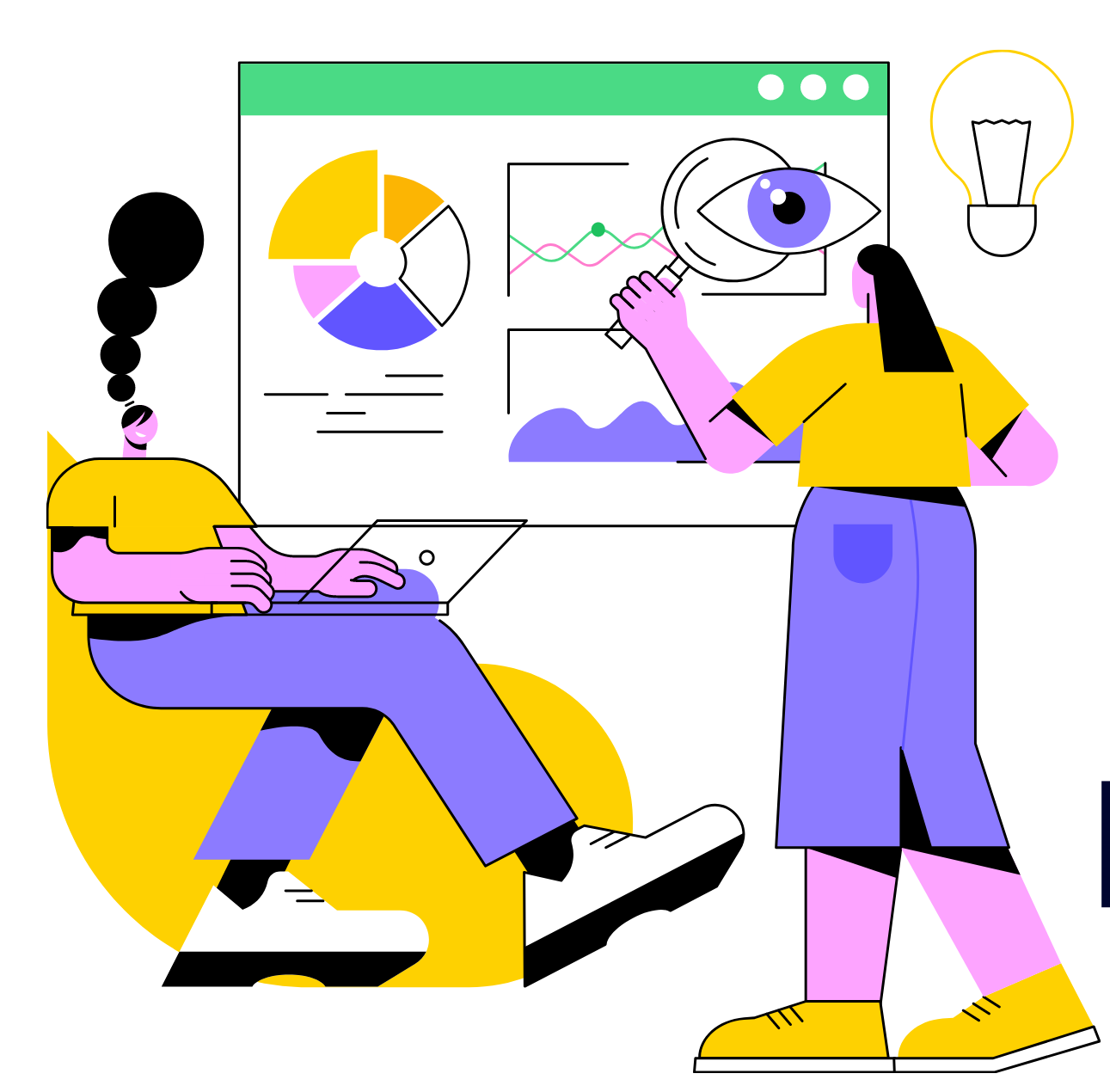[ad_1]

Consumers’ perceptions and actions are changing rapidly.
Couple this with a volatile digital marketing environment where, as recent studies have shown, a typical sales sequence now requires at least 12 to 14 steps to be effective. You get an uphill battle in making your brand or product stand out from the competition.
To keep up with—and maybe even shape—those changes, businesses, and marketers must add another tool to their marketing kit. That’s where consumer behavior analysis comes into play.
By studying how consumers think, feel, and act about your product or service, you can better determine what messaging will resonate and how to position your offering in the marketplace.
This is a guide to help you navigate through factors, theories, and actionable steps in leveraging consumer behavior analysis to achieve the unlikely: creating brand loyalty out of indifference.
If you’re trying to grow an established business, the insights we share in this article can help you accelerate the growth of your business. And if you’re starting a new business, you can gain a competitive advantage by leveraging these important consumer behavior principles from day one.
What is consumer behavior?
Consumer behavior studies customer buying habits, including social trends, frequency patterns, and background circumstances that influence a consumer’s choice to buy something.

Marketers and small businesses can use behavior analysis to determine their target demographic and develop more appealing products and services. An effective consumer behavior analysis should show:
- What influences consumer decision when choosing between options
- What do consumers think and feel about brand and product alternatives
- How consumers behave while shopping
- How consumers’ environment (family, peers, the media) influences their behavior
Several disciplines, including economics, psychology, sociology, anthropology, biology, and chemistry, help explain how people think and make buying decisions. For example:
- Psychoanalysis. According to Sigmund Freud’s psychoanalytic theory, unconscious psychological impulses influence consumer behavior. These impulses may include a person’s hidden desires, fears, intentions, and aspirations.
- Socio-psychology. Thorstein Veblen’s socio-psychological framework explains that consumers’ social and cultural backgrounds are the most significant variables impacting their purchasing decisions. Consumers are more concerned with maintaining social class, income, and cultural or subcultural prestige than simply obtaining their basic needs.
- Reasoned action. According to the theory of reasoned action (TRA), a consumer considers a product or service. They are inclined to make that purchase if they have a good impression and believe that people in their social group will also enjoy it.
- Impulse buying. According to Hawkins Stern’s 1962 theory, impulse buying refers to the convergence of internal and external forces that an individual experiences during the purchasing process. Instead of relying on thorough consideration, a customer who makes an impulsive buy is more likely to be influenced by external influences like discounts, promotions, peers, and service quality.
- Maslow’s hierarchy of needs. Stern’s theory directly opposed Abraham Maslow’s hierarchy of needs theory. Maslow’s hierarchy argues that humans consider needs in a specific order: psychological or survival, safety and security, love and belonging, self-esteem, and self-actualization. Maslow asserts that in consumer behavior, an individual will prioritize needs according to the said hierarchy.
While each of these theories addresses different aspects of a buyer, they all work to accomplish the same thing: making sense of how consumers behave. And they all have a few basic consumer principles that can apply to any individual.
Want a free brand review?

Answer 5 short questions and we will send a custom report with actionable insights and specific actions you can take to build a stronger brand.
We just emailed the info to you.
Three main factors can influence consumer behavior
Human behavior is varied and can be difficult to predict.
But, businesses and marketers can accurately guide and influence otherwise unpredictable behaviors by identifying the forces that drive people’s decisions.
We can narrow these influences to three significant factors: personal, psychological, and social.
Psychological reaction
Psychological reactions refer to the state of mind of an individual at a given time and place.
While psychological reactions play a significant role in customer behavior, these reactions typically change based on the perception and attitude of an individual from one day to another, thus making them particularly difficult to forecast.
A person may be patient one day and angry the next.
Knowing that the person’s psychological reaction does not always entirely reflect who they are as a person can assist your team in de-escalating tense situations and preventing customer churn.
Personality traits
A customer’s personality will significantly impact how they interact and react in the buyer’s journey.
Are they extroverted or introverted? Are they reactive and sensitive, or are they quick to laugh and irreverent?
Knowing where your target audience fits in this category will be crucial to understanding customer behavior.
Social trends
This factor considers how an individual’s social group – be it family, friends, or the media – affects their purchasing decisions.
Social trends are external influences that the customer chooses to pay attention to. They can be in the form of peer recommendations, cultural fads, or societal norms.
What are the different types of consumer behavior?
Consumers engage in a variety of behavioral activities. According to a model developed by NYU Stern’s Henry Assael, buyer behavior can be classified into four distinct categories.
Each type of behavior depends on two variables: how involved a buyer is in the purchase and how many differences there are between brands or products.
To influence behavior, you must ensure you match that behavior with the proper brand archetype and understand how people engage with your product as they go through the customer journey.
Complex buying behavior
Complex buying behavior is exhibited when a customer is highly involved in the purchase decision, and there are many differences between brands or products.
In these situations, buyers typically do a great deal of research before deciding. They also tend to be more selective about the brands they choose and are less likely to be swayed by marketing messages.
As a result, marketing messages for these consumers should focus on the product’s unique features and how it will meet the customer’s needs.
Dissonance-reducing buying behavior
Dissonance-reducing buying behavior is exhibited when a customer is highly involved in the purchase decision, but there are few differences between brands or products.
In these situations, buyers often have difficulty choosing between brands because they all appear similar.
As a result, marketing messages should focus on the product’s unique selling points and how it can meet the customer’s needs better than other products.
Habitual buying behavior
Habitual buying behavior is exhibited when a customer is not highly involved in the purchase decision, and there are few differences between brands or products.
In these situations, buyers often decide based on brand loyalty or convenience.
As a result, marketing messages should focus on reinforcing the customer’s existing positive perceptions of the brand and making it easy for them to purchase the product.
Variety-seeking buying behavior
Variety-seeking buying behavior is exhibited when a customer is not highly involved in the purchase decision, but there are many differences between brands or products. In these situations, buyers often make decisions based on price or style.
As a result, marketing messages should focus on the product’s value and how it compares to other products in the market.
Now that we’ve laid the foundation for understanding consumer behavior let’s look at how small business owners and marketers can leverage consumer behavior to influence purchasing decisions.
They can do this through consumer behavior analysis.
What is consumer behavior analysis?
Consumer behavior analysis is a qualitative and quantitative examination of how people interact with your business.
Customers are segmented into buyer personas defined by their common traits. Each group is tracked throughout the phases of your customer journey to determine how the personas interact with your business.
This process provides marketers and small business owners insight into the priorities, motives, and decision-making methods considered during the customer’s journey.
Why you should integrate behavior analysis into your marketing strategy
1. Content personalization
Content personalization is one of the latest buzzwords in marketing.
There is a growing need for highly personalized content unique to each customer. But, you won’t be able to personalize content until you thoroughly know your customer’s preferences and habits.
2. Customer value
The ability to project a customer’s overall value is essential to creating a solid marketing strategy.
A behavior analysis could add efficiency by identifying ideal customer characteristics. Targeting defined personas can help you zero in on the right customers that would be highly likely to be attracted to your brand.
3. Content optimization
The data obtained from consumer behavior analysis can not only help you narrow your focus on the most valuable segment of your customers, but it can also help you find and engage them in their preferred channel.
Through a customer behavior analysis, you can improve the impact of your content by knowing when and where you can best engage with your target audiences.
The data you get from a consumer behavior analysis can also help open opportunities for cross-selling or upselling.
4. Customer retention
While it’s vital to attract new customers, it’s more important to retain them.
Converting a prospect from observer to buyer is not the end goal. And it is certainly not an assurance that they will continuously patronize your product or brand.
Moreover, even if customers like your company, they may wander off to another brand because competition is fierce.
This is why the savvy marketer or business owner knows that they need to find a way to acknowledge recurring buyers.
Attaining and retaining customers both require an understanding of consumer behavior. An analysis can help you build a customer experience that buyers want to live and relive.
Another reason why repeat customers are valuable? Referrals. They often are the catalysts of recommending your brand or product to their network of family, friends, and colleagues.
And finally, the main event of all this foundational knowledge: how to implement this in your marketing strategy.
Here are six steps to conducting customer behavior analysis:
1. Segment your audience
As a business owner, it is essential to take the time to segment your audience. Doing so will enable you to better cater to their individual needs and create a more targeted marketing strategy.
There are several ways to segment your audience. You may want to consider critical demographic traits: gender, age, and location. Additionally, it can be helpful to look at engagement tendencies such as web activity, preferred channels, and online shopping habits.
By analyzing your customer base, you will be able to identify which characteristics are most valuable to your business.
2. Identify the key advantage for each segment
Many factors influence a customer’s buying decision, and it’s essential to identify the key advantage for each segment. By understanding what motivates each type of customer, you can better tailor your marketing and sales efforts.
Whether it’s a lower price point, superior quality, or convenience, every business has something that appeals to specific customers.
One way to determine how you can improve the customer experience is to consider the context of the customer’s needs. Understanding what they need helps you make changes to suit their requirements better.
3. Track and collect quantitative data
The first two steps help us collect qualitative data, but the next step is to extract quantifiable information about your customers.
Take extra effort to get information from both internal and external sources.
To get this information, you can rely on three types of data: primary, secondary, and third-party.
Primary data is information you collect through surveys or interviews with your customers. You can also pull data such as social media insights, blog subscription stats, and product usage reports.
Secondary data comes from sources like customer reviews and competitor analytics. Third-party data is more general, offering industry-wide statistics.
Combining all three will provide you with a broad scope of data and insights to work with when analyzing customer behaviors.
4. Compare quantitative vs. qualitative data
After gathering your data, it’s time to see how qualitative data stacks up against quantitative data.
To do this, review your customer journey map and compare it to the data sets.
Take a look at which persona bought what product, when they bought it, and where.
After you compare your data against the customer experience, you can start understanding your customers’ journey clearly.
You can map out how customers interact with your business by identifying recurring trends. This information can improve the customer experience and make necessary changes to your marketing strategy.
As you progress through the different stages of your product’s lifecycle, be on the lookout for common obstacles and speed bumps.
Note any behaviors that are specific to a particular customer type. And don’t forget to stay in touch with your most valuable customers; keep them updated on your product changes and show them that you appreciate their business.
5. Test your analysis on a campaign
It’s time to put your customer knowledge to work and start reaping the benefits.
Earlier, we discussed how to use your findings to improve your content delivery. Now is the time to select the best channel for each persona and make the most of opportunities to personalize the customer experience.
As you conduct your customer behavior analysis, keep an eye out for potential roadblocks in the customer journey. By being proactive and responding to these issues promptly, you can nurture your customers throughout their entire experience.
The insights you gain from your analysis will help you make necessary adjustments to your marketing campaigns, ensuring a smoother journey for everyone involved.
6. Document and evaluate your results
After running your tests, you’ll probably want to know if any changes worked.
Use metrics such as acquisition cost, customer lifetime value, and conversion rate to determine the effect of your updated campaigns.
You must continue analyzing your results as new technology, world events, and politics heavily influence your customer’s needs.
Re-evaluating your analysis frequently ensures that you capture new trends in the customer’s journey. You can use this information to prepare for shifts and create strategies to grow your business faster.

[ad_2]
Source link
